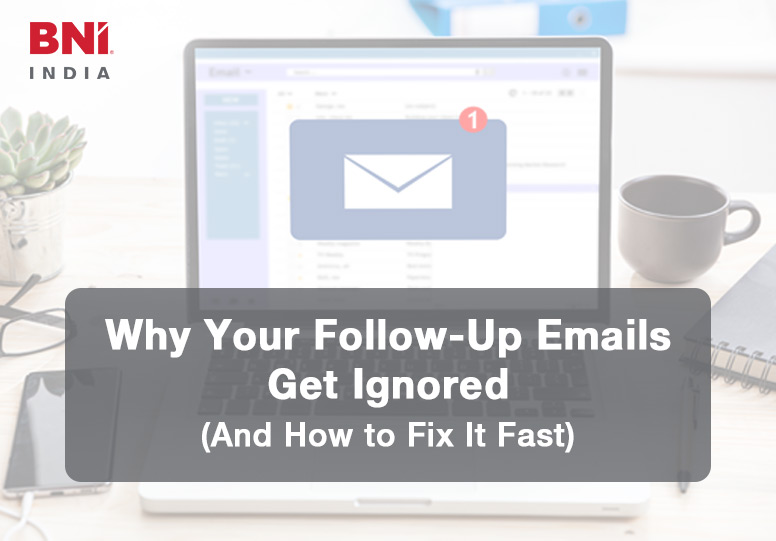How many times have you stared at your sent folder, wondering why your carefully crafted follow-up email was met with… silence?
No reply. No “Got it.” Not even a polite “unsubscribe.” Just a cold, hard void.
It can be frustrating, right? Especially when you know that your message wasn’t spammy. The truth is that your email isn’t competing with just other business messages. It’s up against newsletters, social media alerts and automated reminders.
So why do your follow-ups get ignored? Let’s find out.
1. You’re Following Up Too Soon (or Too Late)
Timing is everything. Send a follow-up too quickly, and you look desperate. Wait too long, and you risk being forgotten.
Why this happens: Most people either set reminders to follow up within 24 hours (which can feel pushy) or they procrastinate for weeks (by which time the lead’s interest has cooled).
A sweet spot is usually 3–5 business days after your first email. That window says, “I respect your time, but I’m still interested.” If it’s time-sensitive (say, an event or project deadline), you can nudge sooner, but always frame it around value, not urgency.
2. Your Subject Line Screams “Ignore Me”
If your subject line is boring, vague, or pushy, your email is toast before it’s even opened.
Why this happens: Too many follow-ups lean on the tired “Just checking in” or “Following up” subject lines. They blend into inbox clutter.
Make the subject line about them, not you. A few examples:
- “Quick thought on boosting your Q4 results”
- “Saw this and thought of your team…”
- “Following up with an idea I think you’ll like”
This way you’re making relevance impossible to ignore.
3. You’re Writing Novels, Not Emails
Nobody has time to read an essay sandwiched between Zoom calls. If your follow-up looks like War and Peace, the recipient is already hitting delete.
Why this happens: We feel the need to over-explain to prove our value, but in doing so, we overload the email.
Follow-ups should be short, skimmable, and crystal clear. Think 3–5 sentences max. Use bullet points if needed. The goal isn’t to answer every possible question, but to keep the conversation moving.
Example:
“Hi Sarah, just wanted to circle back on the proposal I shared. Here’s a quick recap:
- Saves 20% of your team’s time
- Easy to implement within 2 weeks
Would love to hear your thoughts. Can we set up a 15-min call this week?”
4. You’re Forgetting the Magic Ingredient: Value
If your follow-up is only about what you want (a reply, a meeting, a deal), you’re giving people no reason to prioritize you.
Why this happens: We get tunnel vision about closing deals or securing responses, and forget that the other side is asking, “What’s in it for me?”
Always, always add value. Share an article that relates to their industry. Drop a quick stat that supports your case. Offer an insight they haven’t thought of yet. Even a thoughtful compliment on something their company recently achieved goes a long way.
Think of it this way: your email should leave them better off than before they opened it.
5. You Sound Like a Robot
If your email reads like it was stitched together by an AI template machine (ironic, I know), people will tune out. Humans crave personality.
Why this happens: In trying to sound “professional,” many emails lose their human touch. They become stiff, formal, and forgettable.
Write like you’d talk to a smart colleague. Be polite, yes, but conversational. Swap “per our previous correspondence” for “just wanted to follow up on what we discussed last week.” Throw in a touch of warmth and care.
6. You Don’t Make the Next Step Obvious
Sometimes your follow-up is ignored not because the person isn’t interested, but because you’ve left them with too much work to do.
Why this happens: Vague closes like “Let me know your thoughts” or “Hope to hear from you soon” put the burden on the recipient to figure out what to do next.
End with a clear, easy call to action. One step, not five.
- “Are you free for a 10-min call Wednesday at 3pm?”
- “Should I resend the proposal in PDF format?”
- “Would it be helpful if I introduced you to our product manager?”
The less brainpower required, the better.
Bringing It All Together
Follow-up emails get ignored when they feel like noise. They get answered when they feel like value.
So, next time you hit “send,” ask yourself:
- Is the timing, right?
- Does my subject line spark interest?
- Am I keeping it short and clear?
- Have I added genuine value?
- Do I sound like a human?
- Is my next step obvious?
Nail those six things, and suddenly your follow-ups stop feeling like cold pitches and start feeling like conversations.
FAQs on Follow-Up Emails
Q1: How many times should I follow up before stopping?
Generally, 2–3 follow-ups are enough. Beyond that, if there’s no response, it’s best to pause. You don’t want to cross the line from persistence to pestering.
Q2: What’s the best time of day to send a follow-up?
Mornings (8–10 AM) and early afternoons (1–3 PM) preferably on weekdays. But always test for your specific audience
Q3: Should I change my subject line with each follow-up?
Yes. If your first subject line didn’t spark interest, repeating it won’t magically work. Keep it fresh, relevant, and tailored.
Q4: How can I follow up without sounding pushy?
Focus on adding value in every follow-up. Share insights, resources, or quick wins. Make it about helping them, not just pushing your agenda.
Q5: Is it okay to use humour in follow-up emails?
Absolutely, if it feels natural and aligns with your brand. A light, human touch can make you stand out in a sea of corporate jargon. Just keep it professional and respectful.
